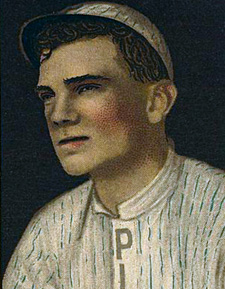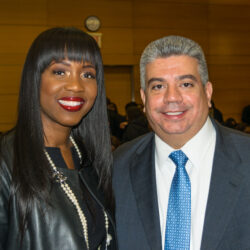
Tom Knight’s Diamond Reflections:

By Tom Knight
Brooklyn Baseball Historian
At one time, every baseball fan in Brooklyn knew who Max Carey was. What they did not know was his real name, which was Maximillian Carnarius. Max was born in Terre Haute, Ind., on Jan. 11, 1890. After two years in the old Central League, Max joined the Pittsburgh Pirates in 1910. There, in the Smokey City, he had his greatest years.
After 20 years of big league play, Max had a lifetime batting average of .285. The fleet-footed outfielder hit .343 with the pennant-winning Pirates of 1925. He batted .329 in 1922 and higher than .300 four other times.
But it was as a great base stealer that the Hoosier is best remembered. He stole 738 bases during his illustrious career, pacing the National League in 1913, ’15, ’16, ’17, ’18, ’20, ’22, ’23, ’24 and 1925. Twice he topped 60, four times more than 50, twice more than 40, and in four seasons he pilfered more than 30. Oh, how he could fly!
In 1922, he stole 51 bags in 53 attempts! The five-foot-11-inch, 170-pound speedster threw right-handed and hit from both sides of the plate. During the 1926 season, Carey was waived to the Brooklyn Dodgers. He was slowing down, but in 1927, at the age of 37, he swiped 32 bags! His last season as a player was 1929.
The Concordia College (Fort Wayne, Ind.) graduate was back with the Pirates as a coach in 1930 and, in 1932, Max, who was popular in Brooklyn, was named to succeed the beloved Wilbert Robinson as manager of the Dodgers.
The team finished third, nine games behind the flag-winning Chicago Cubs. The Dodgers had quite an outfield that season! Lefty O’Doul won the batting title with a .368 average, Hack Wilson hit 23 home runs and had 123 RBIs, and Danny Taylor and Johnny Frederick had 27 homers between them.
Moundsmen Lefty Watson Clark won 20 games, Van Lingle Mungo won 13 and Danny Vance won 12. Al Lopez caught most of the games. The infield was composed of George “High Pockets” Kelly and Bob Clancy, who shared first base, Tony Cuccinello, who manned second, Glenn Wright (shortstop) and “Jersey” Joe Stripp (third base). It was a good club, but it was “wait ‘til next year.”
But next year was a disaster as the Dodgers fell to sixth place, 26.5 games behind the pennant-winning N.Y. Giants, who went on to defeat Washington in five World Series games for top honors in 1933. Carey was let out as manager and his good first base coach Casey Stengel was named to replace him.
Max Carey was voted into baseball’s Hall of Fame in 1961. He died at age 86 on May 30, 1976, in Miami, Fla.
« « «
Here are some unusual events that took place in days gone by.
On April 26, 1931, in a game between the Washington Senators and New York Yankees, Lou Gehrig hit a home run into the seats in centerfield at Griffith Stadium. Yankees’ shortstop Lyn Lary was the runner at second. The ball bounced back and the centerfielder caught it. Lary saw the catch and thought it was the final out of the inning and ran into the dugout unnoticed by manager Joe McCarthy, who was coaching at third. Gehrig rounded the bases and crossed the plate, only to be called out for passing a runner, and lost the homer!
In the same game, Ossie Bluge hit a short fly to rightfielder Dusty Cooke, who ran in for it, flipped over trying to catch it and injured himself. Gehrig ran out to get the ball, but Bluge circled the bases on one of the shortest home runs ever. It was not the Yankees’ day.
On April 16, 1935, Babe Ruth, age 40, made a sensational National League debut at Boston. His single and home run off the great Carl Hubbell led the Braves over the Giants, 4-2.
Leave a Comment
Leave a Comment


